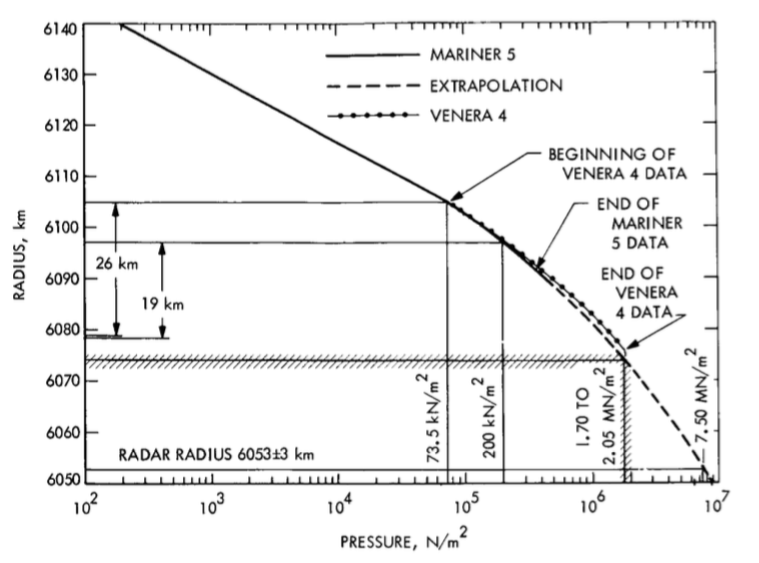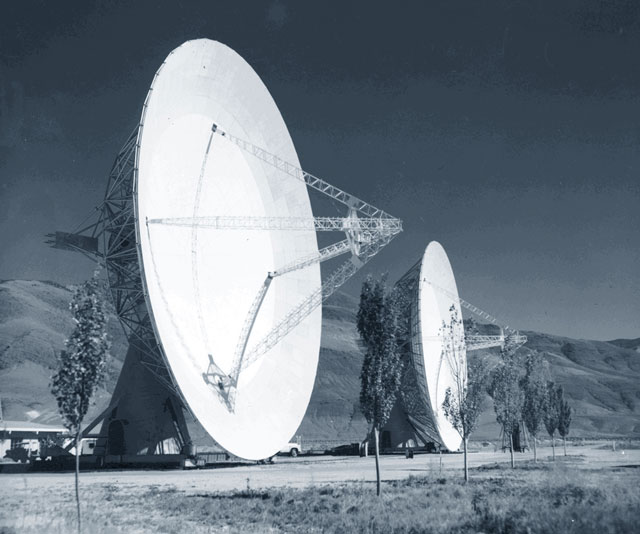In several answers to the question When did planetary scientists realize Venus' surface pressure was almost 100x that on Earth? How did they find out? the known radius of Venus is mentioned.
It was necessary to have this when analyzing and interpreting the radio occultation data as Mariner 5 passed behind Venus (as "seen" from Earth). in order to associate each point in time with a distance between the radio path to the surface of the planet.
The two images below are from the report Mariner Venus 1967 NASA SP-190 (also here) and they show the radius (the horizontal line just above the x axis) to be:
6053 ± 3 km
Interestingly, in 2018, fifty years later Wikipedia gives a consistent and almost identical value, and after a half-century, the uncertainty has been reduced by only a factor of three!
6,051.8 ± 1.0 km
To get such a value, I'm guessing that the timing of radar signals from Earth was used, but analyzing the signal and extracting a distance with such a "small" (by 1960's standards) uncertainty (± 3 km) from a body that's ~12,000 km in diameter must have been a challenge.
The returned signal will contain power from all points on the planet's surface, with some obliquity and/or roughness factors and geometry worked in. It's not just a single "ping", but instead it's a hash of reflections with round-trip path lengths that might be spread out over as much as 12,000 km, geometrically at least.
However this is modified both by surface roughness distribution and strong refraction from Venus' very deep, very dense atmosphere.
And that means you need to do some modeling of the atmosphere (and perhaps surface roughness) to interpret the complex return signal in order to judge the distance to the planet's closest point, and the returned signal might be quite weak and noisy.
And even that just gives you the distance to the surface. To get a radius you need to know where the center of Venus is to kilometer accuracy (not just precision) relative to Earth, and I'm wondering if that requires some pretty meticulous orbital mechanics, astrometry, and understanding of the Sun's gravity field (monopole plus perhaps even its hefty J2?).
Question: How then was the radius of Venus measured so accurately (± 3 km) in the mid 1960's, before Venera 4 and Mariner 5?


